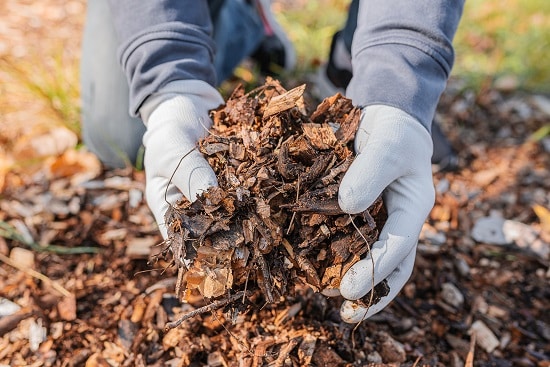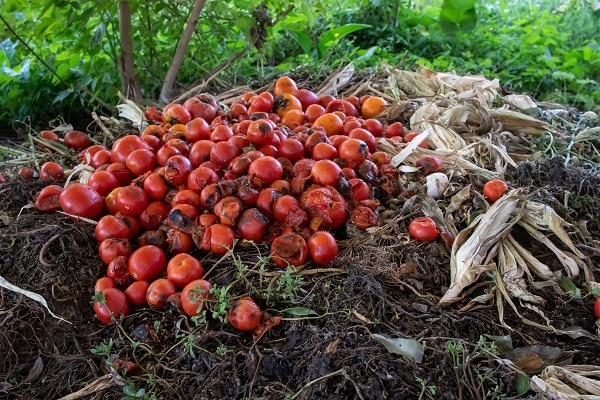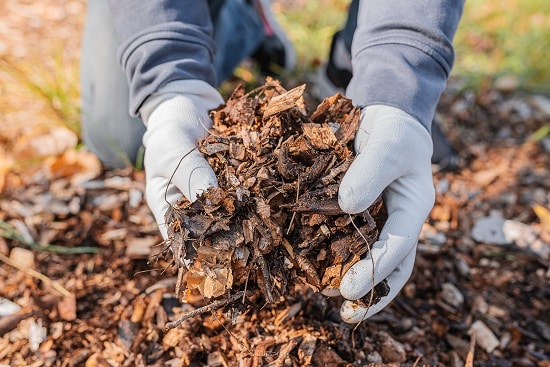
Agricultural Waste: Definition and Impact
Agricultural waste refers to a wide range of organic and inorganic materials discarded after agricultural processes like crop production or livestock farming. Think crop residues (stalks, rice straw, leaves, or husks), animal manure, waste feed, agricultural chemicals, and all the packaging used in the production and supply chain.
Given the diversity of these materials and the large amounts produced annually, agricultural waste is a double-edged sword. It has enormous potential when appropriately managed because it’s biodegradable and nutrient-rich. So, it can become a valuable resource through composting, conversion into biofuels or into biogas.
On the other hand, the effects of agricultural waste can impact life quality and ruin ecosystems. Improper handling of farming byproducts can lead to water pollution, reduced soil fertility, climate impact, and the loss of valuable organic matter. Plus, it can have significant effects on human health.
So, farms need to implement cost-effective agriculture waste management systems to keep up with food production challenges. The world’s population is growing, demanding food security and increased agricultural production. Farming activities will continue to generate large quantities of waste that mustn’t end up in landfills. Farmers need to learn to recognize the potential of agricultural waste and adopt eco-friendly strategies for a more resource-efficient world.
Types of Agricultural Wastes
- Crop residues: stalks, leaves, husks, and straw that remain after harvesting wheat, rice, corn, sugarcane, and others
- Animal manure: feces, urine, and bedding materials
- Agrochemical containers of pesticides, herbicides, and fertilizers
- Leftover feed: grains, forages, and other feed materials
- Harvest and processing waste: fruit peels, vegetable trimming, damaged or rejected produce, and byproducts from food processing
- Packaging materials: plastic bags, cardboard boxes, and containers
- Green waste: trimmings, prunings, plant debris, leaves, branches, and grass clippings

What Is Agricultural Waste Management?
Agricultural waste management refers to all the coordination, handling, and controlling of the waste generated from agricultural activities. The primary goal is to prevent soil and water pollution, greenhouse gas emissions, and health risks for humans and animals.
An effective agricultural waste management system focuses on one or all of the following techniques:
- Waste reduction
- Recycling
- Reusing
These methods turn waste into valuable resources like organic fertilizers or green energy like biogas. It’s a win-win situation for the environment, organizations in the agricultural sector, and the people they serve.
How to Use Recycled Agricultural Waste: 5 Sustainable Techniques for Agricultural Waste Management
Composting
Composting is an effective solution for managing plant residues, trimmings, manure, and other agricultural products which decompose into nutrient-rich compost. The best part is that it can be practiced in small-scale and large-scale settings — from home gardens to small farms to large agriculture organizations.
Compost and organic fertilizers made with agricultural waste improve soil fertility, increase crop productivity, and reduce (sometimes eliminate) the need for synthetic chemical fertilizers.
Biogas generation
Biogas production has emerged as a highly effective waste management method, especially useful in developing countries. Over the past five decades, governments and non-governmental institutions have supported the implementation of small-scale biogas digesters in rural areas, primarily in Asia, South America, and Africa. These digesters convert waste into biogas, a renewable energy source that can be used for cooking, heating, and electricity generation.
The EU is also improving legislation to facilitate sustainable agriculture practices by encouraging biogas generation as an agricultural waste management solution at scale.
Biogas not only helps manage agricultural waste effectively but also improves living conditions by providing access to cleaner and more efficient energy production, reducing air and water pollution, and uplifting the overall quality of life.
Mulching
Agricultural solid waste used as mulch helps conserve soil moisture, suppress weed growth, and enhance nutrient retention. Mulching protects the soil from erosion and temperature fluctuations, improving crop health and productivity.
The most common and effective agricultural wastes for mulching include straw (wheat, rice, or barley), hay, crop residues (corn stalks, bean vines, or sugarcane tops), leaves, and grass clippings.

Biomass conversion
It includes techniques like thermochemical and biochemical conversion that transform agricultural waste into valuable products like biofuels, biochemicals, and bioplastics.
Some of the most popular biomass conversion processes are:
- Combustion: you can burn biomass to produce heat and electricity. It’s more sustainable than burning fossil fuels because the carbon dioxide released during combustion is part of the carbon cycle.
- Fermentation: fermented crops or sugarcane produce biofuels like ethanol or biodiesel. They’re a cleaner alternative to fossil fuels in transportation and other industries.
- Pyrolysis: heating biomass without oxygen generates biochar, bio-oil, and syngas. Biochar can be used as a soil amendment, while bio-oil and syngas can be further processed into biofuels and other valuable products.
- Gasification: this partial oxidation process converts biomass into a gas mixture known as syngas. Syngas can be used for power generation or further processed to produce various chemicals and liquid fuels.
Recycling packaging materials
Agricultural operations use various materials, including plastic containers, bags, and packaging, to facilitate crop planting, harvesting, and transportation. While these materials are essential for ensuring efficient and hygienic agricultural practices, their widespread use amplifies the effects of agricultural waste on the environment.
Proper recycling involves collecting, sorting, and processing plastic materials to transform them into new products or raw materials for manufacturing. An agriculture organization participating in recycling programs contributes to the circular economy, reducing the demand for new raw materials and conserving natural resources.
Challenges in Agricultural Waste Management
Nutrient availability and soil cycling
Practices like burning crops or disposing of animal manure without recycling can lead to nutrient losses and reduced soil fertility. As a consequence, farmers are forced to use synthetic fertilizers, which can contribute to environmental pollution and greenhouse gas emissions.
Sustainable practices that can help address this challenge are:
- Improve soil health with compost
- Protect the soil with mulch and green manure
- Increase soil fertility with the proper biomass following nutrient release rates
Technologies for nutrient reuse
Anaerobic digestion systems are the most effective solution to the challenges of nutrient reuse in agricultural waste management. Bacteria break down animal manure and organic waste in controlled, oxygen-free environments to produce biogas and nutrient-rich digestate.

HomeBiogas 2
Designed for the next generation of green innovation.
The biogas can be used as a renewable energy source, while the digestate can serve as a nutrient-rich crop fertilizer. This closed-loop system helps capture and recycle nutrients to improve crop growth, enhance soil health and function, and reduce carbon footprint in food and animal production.
Reducing contaminants for improved food safety
Improper disposal or inadequate agricultural waste treatments can contaminate soil, water sources, and food crops with pesticides, herbicides, heavy metals, pathogens, and chemical residues.
As these contaminants accumulate in the food chain, they pose health risks to consumers and livestock.
Reducing contaminants starts with integrated pest management (IPM) practices that encourage using natural predators and crop rotation to control pests and diseases, reducing the need for pesticides.
Additionally, farmers must monitor the quality and safety of agricultural waste to ensure that derived products comply with safety standards.
Mitigating environmental emissions
Agricultural waste, especially manure, emits large amounts of methane and nitrous oxide during decomposition and fermentation. Additionally, improper waste disposal can lead to water and air pollution.
It’s another issue where anaerobic digestion and composting can help. Implementing best management practices is another fundamental approach to mitigating environmental emissions. It involves waste storage, handling, and application methods to reduce the release of pollutants into the environment.
Technological Advances and Innovations
Gone are the days when agro-industrial wastes were labeled as trash. Today, we know that the bioactive compounds in agricultural wastes are valuable resources for producing biofuels, enzymes, vitamins, antioxidants, animal feed, antibiotics, and various chemicals.
So, technological advances have been significantly transforming agricultural waste management for more efficient and sustainable practices. On the one hand, technology like remote sensing, GPS systems, and data analytics optimizes agricultural input usage and minimizes waste generation.
On the other hand, advancements in waste-to-energy technologies have opened new possibilities for agricultural waste management. Technology enables us to convert farming residues and byproducts into green energy and bio-based chemicals. Not only do these technologies provide a sustainable solution for managing waste, but they also contribute to sustainable development and a circular economy.
Agricultural Waste Regulations
Overall, agricultural waste regulations aim to balance economic development, agricultural productivity, and the protection of the environment. International organizations, such as the Food and Agriculture Organization of the United Nations (FAO) and the World Health Organization (WHO), are crucial in promoting sustainable agricultural waste management practices globally. Furthermore, international agreements, such as the Paris Agreement on climate change, emphasize the importance of reducing agricultural emissions.
In the US, the Environmental Protection Agency (EPA) sets guidelines and standards in this field. States also play a significant role in regulating agricultural waste. Each state may have specific laws tailored to address unique farming practices and local environmental concerns.
State departments of agriculture and local environmental agencies oversee compliance with these regulations.
Benefits of Effective Agricultural Waste Management
- Farmers mitigate the risk of contaminating natural resources and preserve ecosystem health by reducing the release of harmful substances, such as pesticides, herbicides, and animal manure.
- Recycling organic waste through composting or anaerobic digestion produces nutrient-rich fertilizers, protecting water quality and supporting sustainable food production at scale.
- Farmers can earn more money and save on waste disposal costs by using waste for bioenergy or composting while improving soil health and crop productivity.
- The proper waste treatment enhances food safety by minimizing exposure to harmful chemicals and pathogens.
- Treating waste as a resource contributes to a more sustainable and resilient agricultural sector, long-term economic growth, and environmental protection.
Meet The HomeBiogas Solutions
HomeBiogas systems provide accessible and affordable solutions to convert waste into valuable resources. These systems leverage anaerobic digestion, a natural biological process that breaks down organic materials without oxygen, to produce biogas and nutrient-rich liquid fertilizer.
By adopting HomeBiogas solutions, farmers can use agricultural waste to fuel cleaner and more sustainable production cycles. Biogas is a renewable energy source for cooking and heating, reducing reliance on traditional fossil fuels and contributing to a greener environment. This cleaner production mitigates emissions and lowers the overall carbon footprint associated with conventional waste disposal methods.
As food insecurity risks becoming a pressing concern, HomeBiogas solutions offer a dual benefit. The nutrient-rich liquid fertilizer (digestate) is a valuable resource to enrich the soil, improving crop yields and enhancing agricultural productivity.
It’s a cost-effective way to close the nutrient loop while reducing dependence on external inputs, ultimately contributing to food security and sustainable development.

Final Thoughts
Effective agricultural waste management is a crucial aspect of sustainable farming practices that protect the environment and human health. So, more farmers must find ways to give organic waste a second life to optimize resource usage and reduce environmental impact.
Among the most popular sustainable agricultural practices, small-scale anaerobic digestion stands out as an efficient and accessible waste management solution for farms of all sizes.
It empowers farmers to tackle waste challenges while embracing circular economy principles. This simple but effective technology keeps waste under control, enabling small farms to use green energy sources and become less dependent on fossil fuels.






